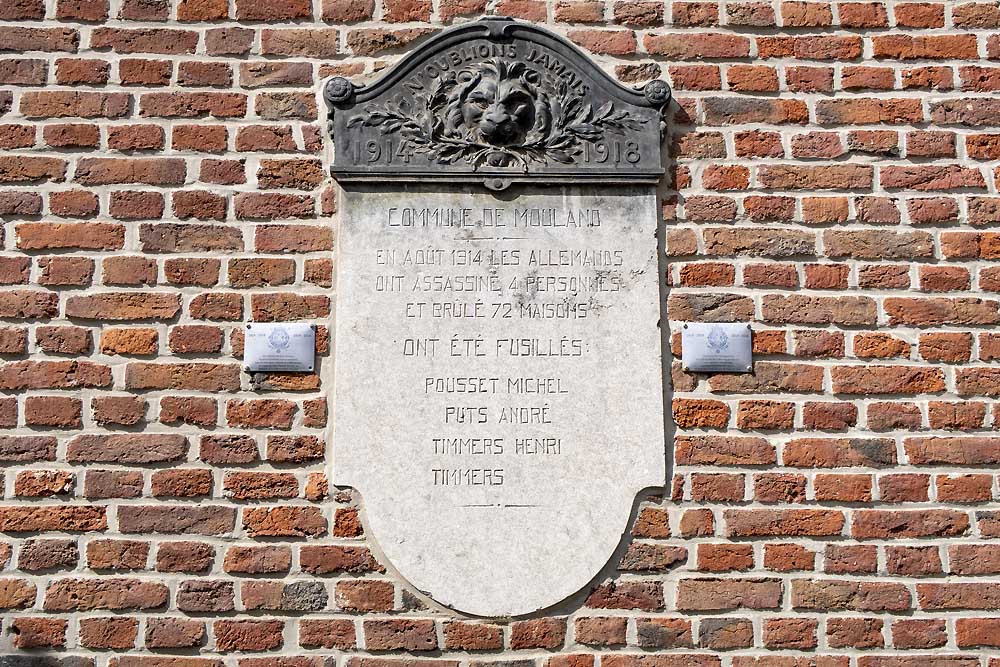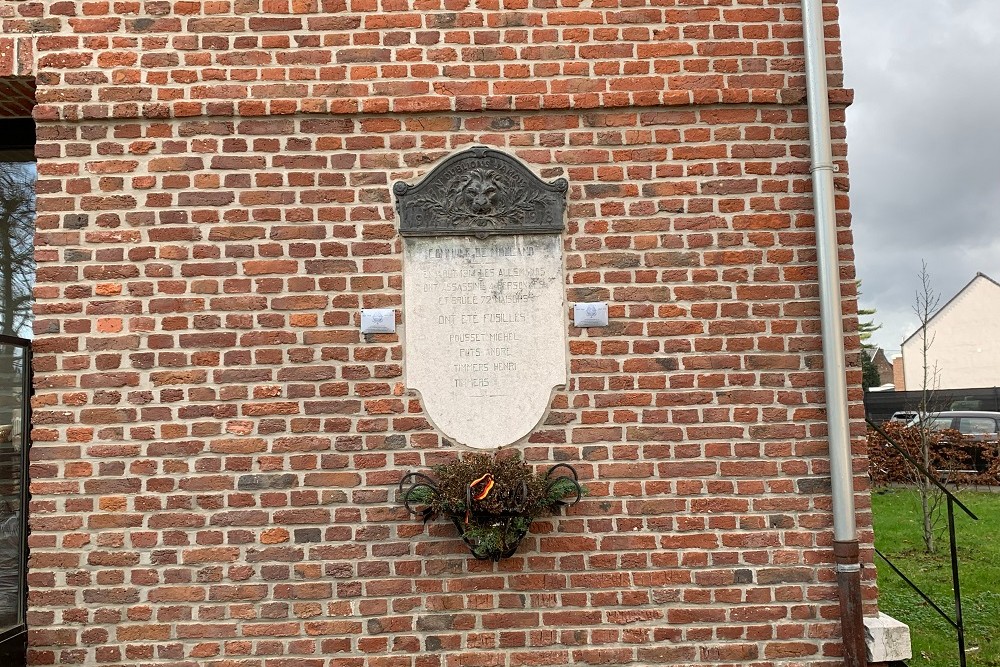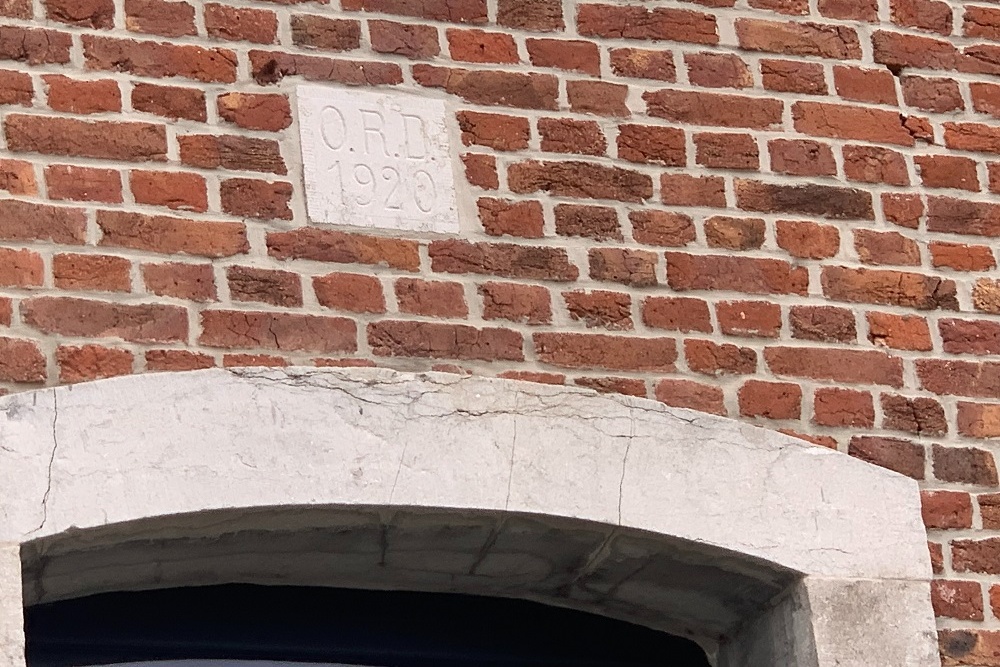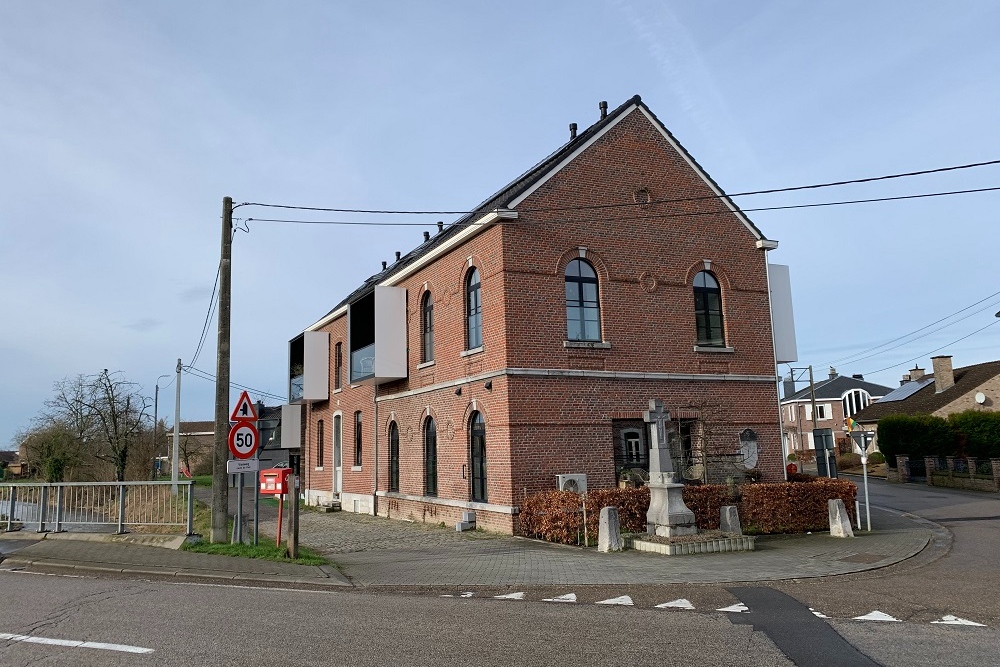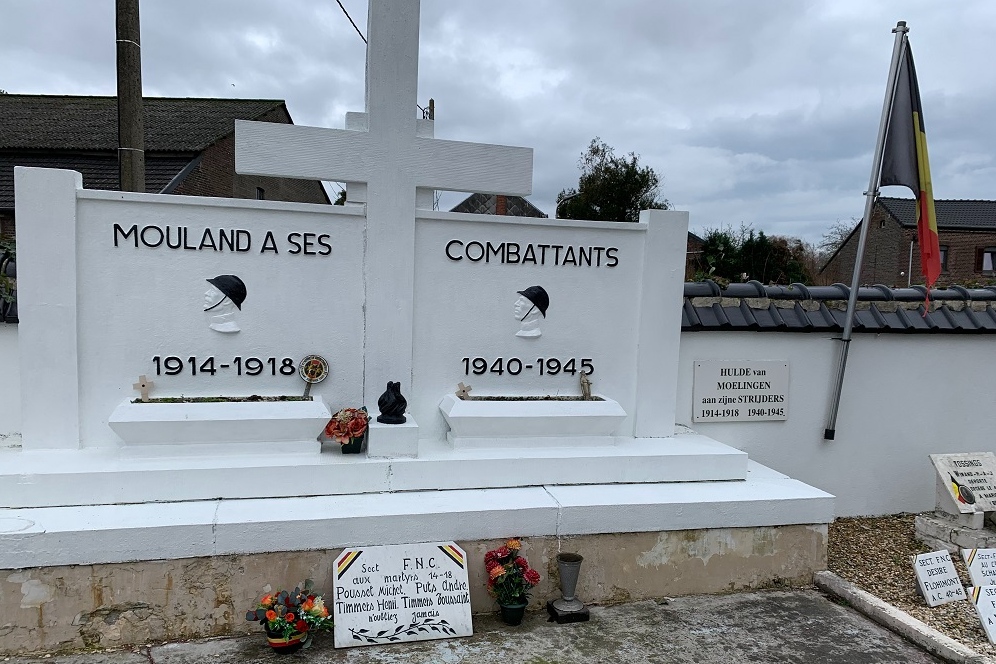Memorial Executed Moelingen
Text on the plaque:
Municipality of Moelingen
In August 1914, the Germans murdered 4 people and burned down 72 houses.
Were executed
POUSSET Michel
PUTS André
TIMMERS Henri
TIMMERS
Only from André Puts some data are known. He what born just across the border at the village of Mesch, was married and lived in Moelingen. He was 66 years old when he was shot. The four are also remembered and honored as martyrs on the monument in the cemetery near Moelingen church.
This stèle was installed in the facade of the old town hall of Moelingen. This town hall was also set on fire in August 1914. It was later restored with money from the Belgian central government. After the war, a special commission was set up to rebuild the villages and towns that had suffered heavily from the German invasion in the early days and where many houses were burned down. This commission was called "Office des Régions dévastées," or the Office of Devastated Areas.
Houses and buildings rebuilt with the support of this Office were given a special plaque with the abbreviation 'ORD' referring to this Office. Also the plaque would hold a year. The year referred to the year of rebuilding. The former town hall of Moelingen was rebuilt in 1920 as evidenced by the 'ORD stone'. (Photo 4, side facade above entrance door). Today the former town hall is an apartment building.
The village of Moelingen (as well as the small town of Visé) was one of the hardest hit villages during the first days of war in August 1914. As many as 72 houses were set on fire, which was almost the entire village.
The village of Moelingen had the misfortune of being located exactly in "gap" where the guns of the nearby forts of Barchon and Loncin no longer had range. The Germans knew this because the German company Krupp had supplied the guns. This became known as the "gap of Visé". After the 1st World War, the Belgian army ordered this gap to be closed with the construction fort Eben-Emael on the height of Castert near Maastricht.
It is known that the Germans brutally and with great violoance countered any resistance as they passed through. Insurgent citizens who shot at passing troops, so-called franc-tireurs, were shot at worst, and their houses set on fire. Anything that delayed the passage to France (Germany followed the von Schlieffen plan to attack the weakly defended north side of France through Belgium, which demanded a meticulous timetable), was crushed with brute force. France had to be defeated before Russia had mobilized its army and Germany would be in a two-front war.
Near the junction of the main road Moelingen to Berneau (N653), the German Meuse Army was encamped in the fields towards the village of Voeren. This German army was awaiting the capture of the bridges at Visé before they could move on.
Near the Meuse at Moelingen on the border with the Dutch village of Eijsden, the Germans constructed a pontoon bridge in order to reach the other side of the Meuse and take Liège.
Germany thought they could overrun Belgium without too much resistance on their campaign to France. They were wrong. Belgium defended itself with pride and without fear.
Do you have more information about this location? Inform us!
Source
- Text: Ed Lewandowski
- Photos: Joost Verheijden (1), Ed Lewandowski (2, 3, 4, 5)
Nearby
Museum
- Fortress Eben-Emael - Eben-Emael (Bassenge)
- Museum Maison du Souvenir - Hermalle-sous-Argenteau
- Museum of the Fort Aubin-Neufchâteau - Neufchâteau (Dalhem)
Point of interest
- First Liberated House in the Netherlands - Eijsden
- Information sign The escape of Emperor Wilhelm II - Eijsden
- Information Sign Escape to freedom - Eijsden
Monument
- War Memorial Moelingen Cemetery - Moelingen (Voeren)
- War Memorial Moelingen - Moelingen (Voeren)
- Memorial Executions 7 August 1914 - Moelingen (Voeren)
Cemetery
- Belgian War Graves Lixhe - Lixhe (Visé)
- Dutch War Graves Roman Catholic Cemetery Eijsden - Eijsden
- Belgian War Graves Visé - Visé
Remembrance Stone
- Stumbling Stones Diepstraat 55 - Eijsden (Margraten)
- Stumbling Stone Vroenhof 3 (now number 16) - Eijsden
- Stumbling Stone Gronsvelderweg 81 - Maastricht
